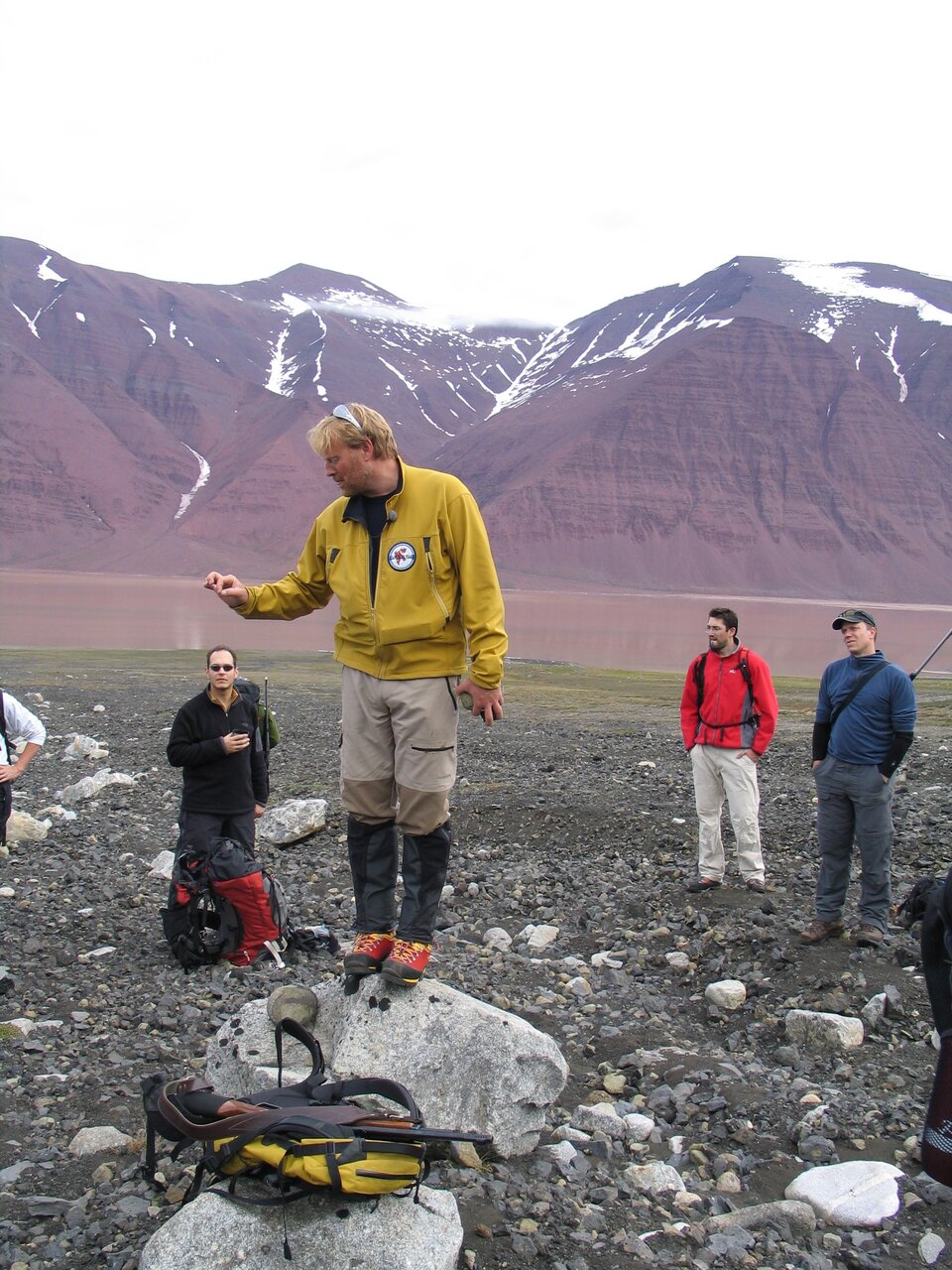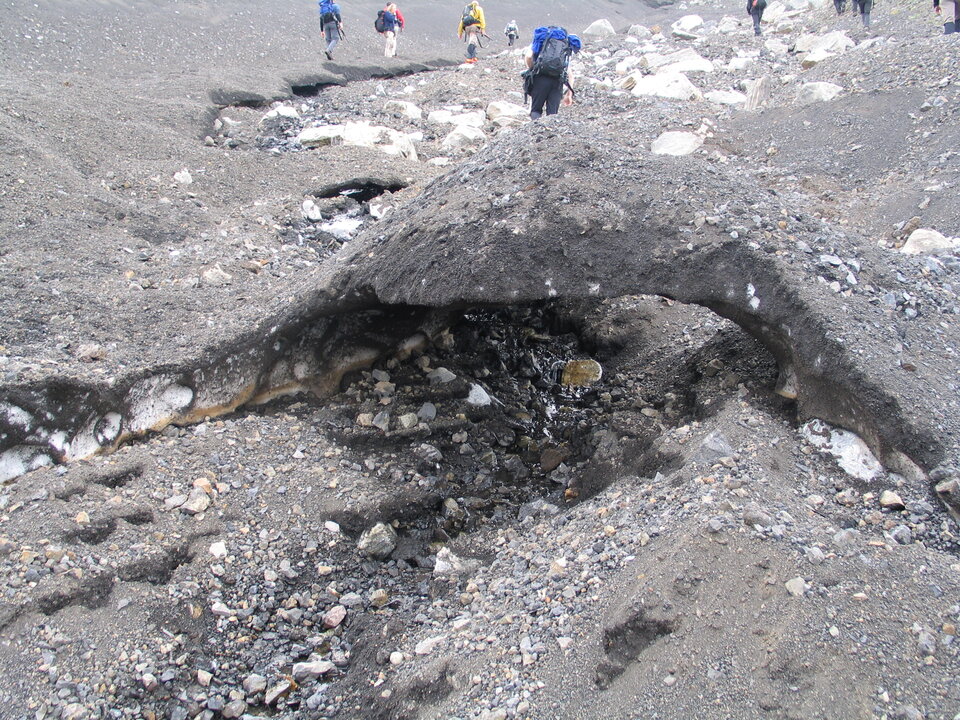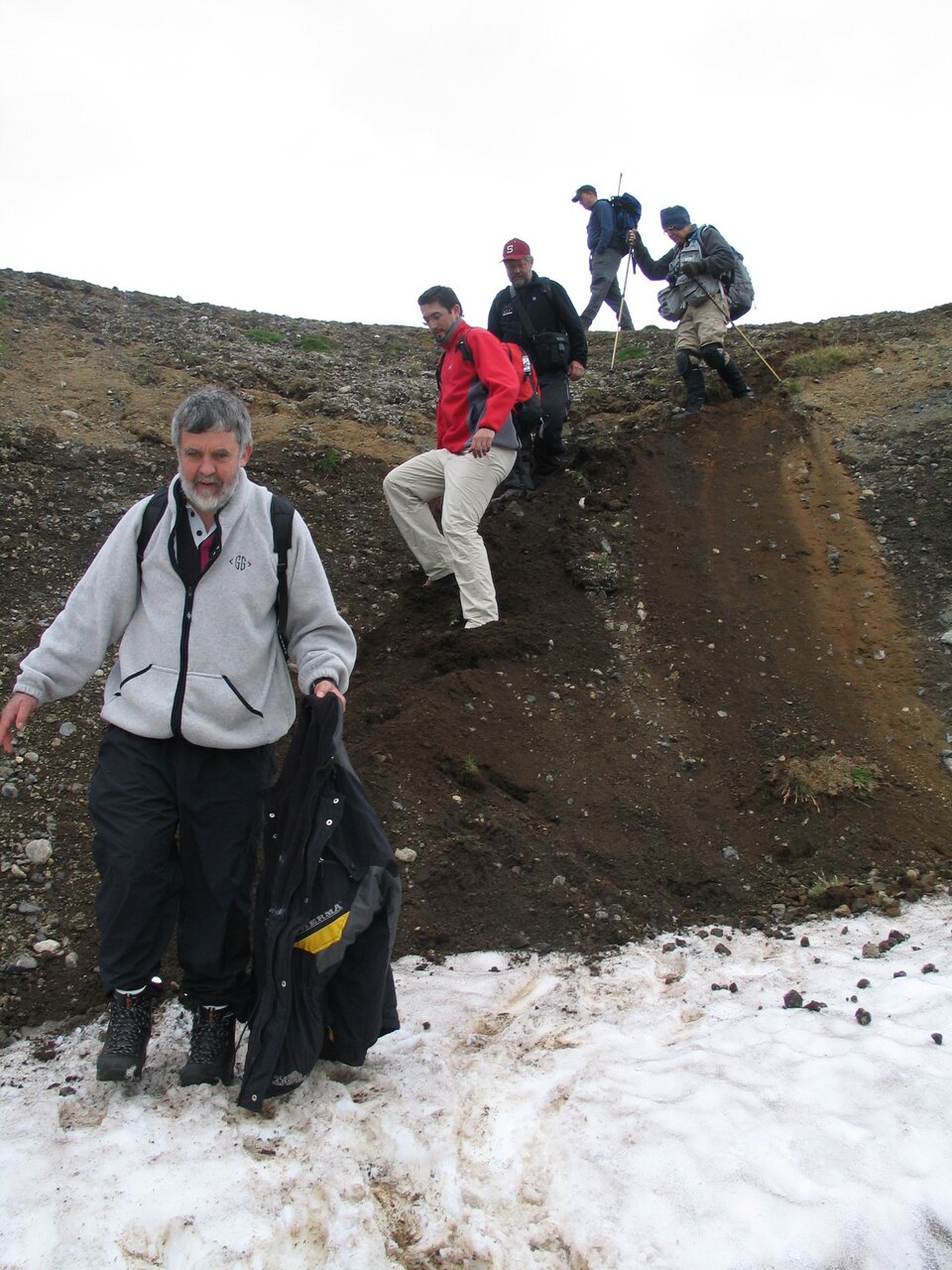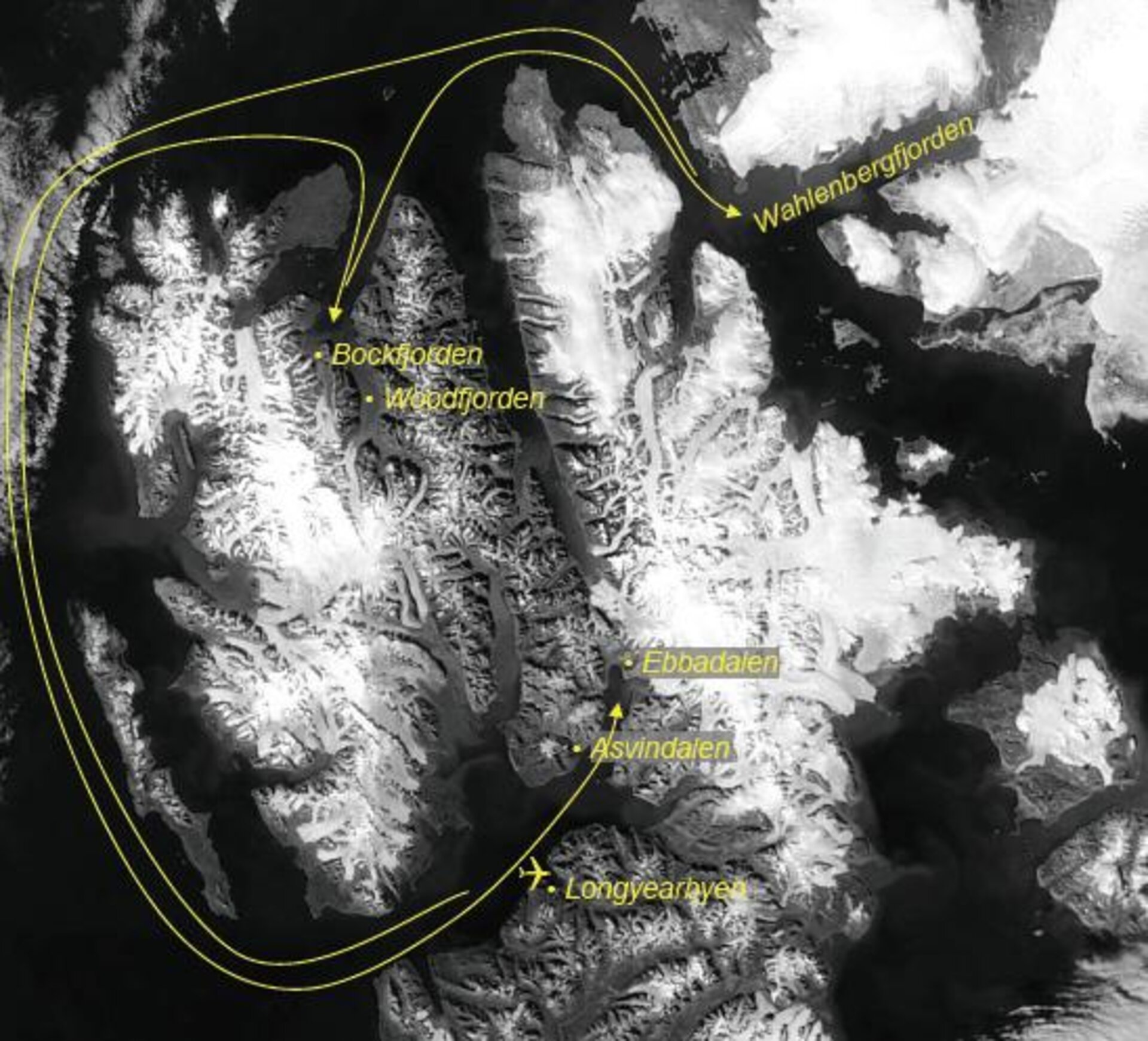AMASE student blog: First hike
With a little research (i.e. asking around) I found out that the whale we saw last night was a Fin-whale (Finnehval in Norwegian), which is characterized by a large fin on its back ;-)
They don't do the classic tale above the water when they come up for air, which will explain why the money-shot I was waiting for never came around ;-) Also, I only had my film camera with me on deck, but I can probably get some pictures from someone else to post when we return to Svalbard - and hopefully we'll get to see more whales.
Today we went into land at around 13:30 in our first location, Bockfjorden, Sverrefjeldet. The trip today was just an 'introduction' hike - Hans and Steele (expedition and science lead respectively) gave a some short lectures along the way about the geography and the volcanic activity of Sverrefjeldet (which we were climbing). This apparently erupted under an ice-sheet about 1 km thick, giving rise to some very fascination rocks containing carbonaceous organisms similar to those found in Martian meteorites, one of the reasons why Svalbard is considered the best geological Mars analogue location on Earth.

I collected a tonne of rocks (mostly small ones) including baked marble, which I found very fascinating because its bright white colour stands out immensely on the background of the black and green volcanic rocks (the green is olivine).
The hike itself was relatively short (if you're a hiker, if not it was quite a walk) with many breaks. We only climbed one very steep hill and. This is not going to be an easy trip ;-) - but when you get up, it's all worth it! And then some! It's gorgeous and I'm sure I'll get the hang of hiking after a few days, if nothing else; I'm not the only non-professional hiker of the group.

There were also a few people that stayed on board to do some work and a small group of people went hiking on a huge glacier in the area, but unfortunately it was only for experienced hikers, which is probably just as well ;-) The rest of us returned to the boat for dinner, but at 22:10 the glacier group is still out.
After dinner everybody went back to work, I've been helping out the rover group again, only this time with mechanical issues - the rover has little boxes for samples that the robotic arms needs to open and close, so the lids are equipped with taps, only; after mounting STARS (Sample Target Assessment Rock Surfaces, see below) it turned out that STARS would hit the taps so we had to come up with a solution.

The solution found by Paulo Yontse, the mechanical engineer of the rover was to hinge the tap on with a spring and tape, allowing the tap to bend one way but not the other. The really fun thing was that I got to build these taps doing the metal work (mostly drilling and a bit of filing) and the assembly and everything. They look like little bunnies and I'm very proud ;-)
STARS is another JPL instrument which analyses rock surfaces through optical analysis of laser induced florescence. It basically points a laser at a target area and detects whether the target area becomes fluorescent. The instrument is mounted on the robotic arm of the CliffBot and is developed, and accompanied on AMASE, by Claus Mogensen, Rohit Conrad and Pan Conrad.
Our internet on board the ship is not functioning, so they're letting me use the ships email for now, so I think I'll go to the bridge to send this and then turn in ;-)





